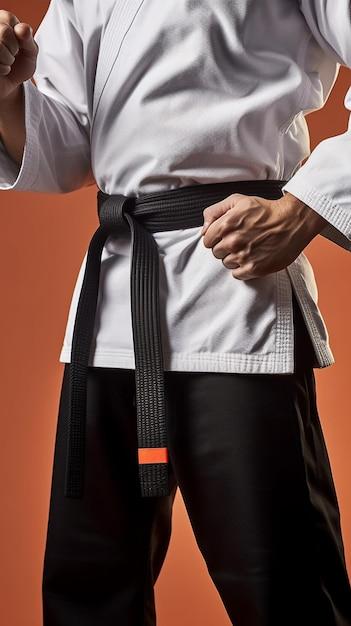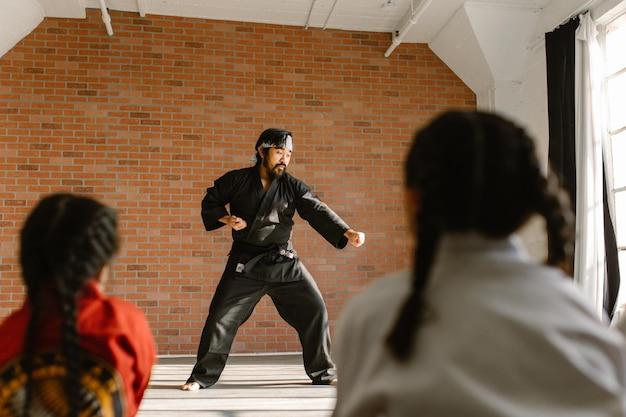The world of Dungeons and Dragons is filled with an array of unique and powerful characters, each with their own set of skills and abilities. One such class that stands out is the Monk. With their mastery of martial arts and ki manipulation, Monks are agile and deadly warriors who can deliver devastating blows to their opponents.
In this blog post, we will dive deep into the realm of Monk abilities and focus specifically on the Martial Arts Die in 5E. We’ll uncover the answers to burning questions like “What do you roll for flurry blows?” and “Do you add a modifier to flurry of blows?”. We’ll also explore intriguing topics such as the compatibility of Martial Arts with Flurry of Blows, the best race for a Monk in DND, and the potential of the Arms of the Astral Self.
So, grab your dice and get ready to embark on an adventure that will explore the inner workings of the Martial Arts Die in 5E. Whether you’re a seasoned Monk player looking to optimize your character or a curious soul seeking to understand the secrets of Monk abilities, this blog post is your ultimate guide. Join us as we unravel the mysteries and unleash the full potential of the Monk in Dungeons and Dragons 5E.
What are the Different Martial Arts Die in 5E
If you’re a fan of Dungeons & Dragons 5th Edition (5E), you already know that martial arts play a crucial role in the game. From swinging swords to throwing punches, combat is all about well-executed strikes and the roll of the dice. But what are these mysterious “martial arts die” everyone keeps talking about? Let me break it down for you in a way that even a goblin with a low intelligence score could understand.
Understanding Martial Arts Die in 5E
In D&D 5E, the martial arts die refers to the damage die that your character rolls when making an unarmed strike or using certain monk weapons. Now, I know what you’re thinking, “Why would I rely on puny punches when I can wield a mighty battle axe?” Well, my friend, the beauty of martial arts lies in their finesse and precision.
Feeling the Power with Monk Martial Arts Die
Ah, the monks, those holy warriors who are the epitome of discipline and ass-kicking. When you choose to embody a monk in 5E, your martial arts die starts at a humble d4. But fear not, grasshopper, for as you progress in levels, your die grows stronger and deadlier. By the time you reach 17th level, your martial arts die becomes a formidable d10, leaving your enemies in awe of your combat prowess.
Thinking Outside the Monk Box
Martial arts die aren’t limited to monks alone. Other classes can also tap into their inner fighter and unleash devastating strikes. Take the Way of the Four Elements subclass, for example. As an elemental bender, you can channel your Ki to cast spells and deal damage. Your martial arts die is determined by your monk level, so remember to nurture your monk side alongside your elemental powers.
Unleashing the Fighter’s Fury
What’s a discussion about martial arts die without mentioning the stalwart fighters? These skilled warriors may not have the same mystical flair as monks, but they make up for it with their unmatched versatility. While they don’t have a specific martial arts die, fighters can take certain feats, such as the “Tavern Brawler,” that allow them to roll a d4 when making unarmed strikes. So, if you ever find yourself disarmed or in need of a good old-fashioned brawl, remember that fighters can throw some punches too.
A Splash of Barbarian Rage
Speaking of brawling, barbarians may not be known for their finesse, but they sure pack a punch. When Barbarians enter their frenzied rage, they gain the ability to make a bonus attack with their unarmed strikes. And guess what? These strikes also benefit from the martial arts die. So, next time you see a raging barbarian charging at you, be prepared to feel the fury of their fists.
So, there you have it, adventurers: a rundown of the martial arts die in D&D 5E. Whether you’re a monk, a fighter exploring their inner brawler, or even a raging barbarian looking to mix things up, these dice represent the power you can unleash upon your foes. So roll those dice, strategize your moves, and may your martial arts be as crisp and deadly as a well-timed critical hit.
FAQ: What Are Martial Arts Die In 5E
Welcome to our comprehensive FAQ-style guide on martial arts in Dungeons and Dragons 5th Edition (5E). Whether you’re a Monk player or just curious about how martial arts work in the game, we’ve got you covered. In this subsection, we’ll answer some of the most common questions about martial arts die and provide insightful explanations. So, let’s dive in!
What do you roll for flurry blows
When executing a Flurry of Blows, you roll two additional unarmed strikes. For each strike, roll a d20 to determine if it hits the target. If your attack roll meets or exceeds the target’s Armor Class (AC), you successfully land the strikes.
Do you add modifiers to flurry of blows
Yes, you add your appropriate modifiers to the attack and damage rolls of your Flurry of Blows unarmed strikes. These modifiers may include your Dexterity modifier, any magical item bonuses, and other relevant abilities.
Is a shortsword a monk weapon
Yes, a shortsword is indeed a valid monk weapon per the 5E rules. Monks can use shortswords to make their martial arts attacks and apply their martial arts die for damage.
Does flurry of blows stack with Martial Arts
No, Flurry of Blows does not stack with the Martial Arts feature. When you use your bonus action for Flurry of Blows, you must first use the Attack action to unleash your martial arts. However, you can still benefit from Flurry of Blows’ additional unarmed strikes.
Is an unarmed strike a strength weapon
Unarmed strikes in 5E are not considered strength weapons. Instead, they rely on a monk’s specialized training, utilizing the higher of your Strength or Dexterity modifier for the attack and damage rolls.
Can arms of the astral self hold things
Arms of the Astral Self, a feature available to some monks, are considered spectral arms. While they can deliver powerful unarmed strikes, they are unable to physically hold or manipulate objects in the traditional sense.
Does unarmored movement increase flying speed
No, the Unarmored Movement feature does not directly increase a monk’s flying speed. However, some races and class features may grant flight capabilities, which can be combined with the monk’s base movement speed.
What race is best for Monk in DND
The best race for a Monk in DND depends on your playstyle and preferences. However, races with bonuses to Dexterity, such as Wood Elves or Halflings, can be a great fit for Monks due to their increased AC and attack bonuses. Ultimately, choose a race that aligns with your character concept and maximizes your desired abilities.
What is a Monk in 5E
In 5E, Monks are martial artists who harness their Ki energy to perform extraordinary feats, specializing in unarmed combat and wielding monk weapons. They possess various unique class features that enhance their mobility, defense, and striking capabilities.
What is the best race for Monk
The best race for a Monk can vary depending on the desired playstyle and character concept. Races such as Wood Elves, Halflings, or Aarakocra can be excellent choices for their inherent agility, which complements the Monk’s swift and versatile nature. It’s worth considering a race that aligns with your character’s story and desired abilities.
Do Aarakocra make good monks
Aarakocra can make exceptional Monks due to their flying speed and natural Dexterity bonus. Their ability to gain a strategic aerial advantage and maneuverability can greatly supplement a Monk’s already impressive combat abilities.
Can you grapple with Astral arms
No, Astral arms cannot be used for grappling in 5E. The arms are primarily used as a means of delivering powerful unarmed strikes and do not possess the necessary physicality for grappling.
Do you add Dex to unarmed strikes
Yes, you add your Dexterity modifier to your unarmed strikes in 5E. Monks often rely on their speed, accuracy, and agility when landing devastating blows using unarmed strikes.
Is Monk good in 5E
Monks can be incredibly potent and versatile characters in 5E. With their exceptional mobility, unarmed strikes, defensive abilities, and Ki-powered features, Monks have the potential to shine both in combat and exploration encounters.
What do Monks add to unarmed attacks
Monks add their Martial Arts die to their unarmed attacks. This die increases as they gain levels in the Monk class, allowing them to deal progressively more damage with their unarmed strikes.
Is astral self Monk good
Yes, Astral Self Monks can be quite formidable. Their ability to summon potent spectral arms and manifest a powerful astral form grants them enhanced capabilities in combat, providing additional attack options and defensive benefits.
How many bonus actions can a Monk take
Monks can typically take only one bonus action per turn, as per the standard rules of 5E. However, some class features or feats might grant additional bonus actions or expand the Monk’s options during their turn.
Are Astral arms unarmed strikes
Yes, Astral arms generated through the Astral Self feature count as unarmed strikes. They benefit from the Monk’s Martial Arts die and any other relevant features that improve unarmed strikes.
Can monks use flurry of blows twice
In a single turn, Monks can use their bonus action for Flurry of Blows once. Flurry of Blows allows them to deliver two additional unarmed strikes after using the Attack action. However, Monks can only use Flurry of Blows once per turn.
Can a monk run up walls
Yes, Monks have the ability to run up vertical surfaces and across liquids as they level up. Their Unarmored Movement feature grants them increased mobility and agility, allowing them to perform exceptional feats such as running up walls.
What can Monks do in D&D
Monks in D&D are versatile warriors skilled in martial arts, possessing an array of unique abilities and features. They excel in unarmed combat, wield monk weapons, harness Ki energy to perform extraordinary feats, and possess several defensive and mobility-enhancing features.
What is a Ranger in D&D
A Ranger is a class in D&D that specializes in wilderness survival, tracking, and ranged combat. They are skilled hunters and scouts, capable of unleashing powerful attacks while maintaining a connection with nature and utilizing spells to aid their adventures.
Is quivering palm good
Quivering Palm is an iconic ability of Monks that allows them to deliver a single, devastating strike. When successful, the target must make a saving throw or face instantly being reduced to 0 hit points. This ability can be incredibly powerful, potentially turning the tide of a battle with one precise strike.
How many attacks can a Level 5 Monk make
At level 5, a Monk can make two attacks when taking the Attack action. This number can increase as the Monk progresses in levels, gaining more attacks and unlocking additional features that enhance their combat prowess.
We hope that this FAQ-style guide has shed some light on the world of martial arts in D&D 5E. Whether you’re a seasoned Monk player or a curious adventurer, understanding the mechanics and intricacies of martial arts will undoubtedly enhance your gaming experience. Keep practicing those strikes and remember, with each punch, you’re one step closer to becoming a true master of combat!
Note: This article is for informational purposes only and does not replace the official Dungeons and Dragons rulebooks. Always consult the official rulebooks and your Dungeon Master for specific gameplay inquiries.

